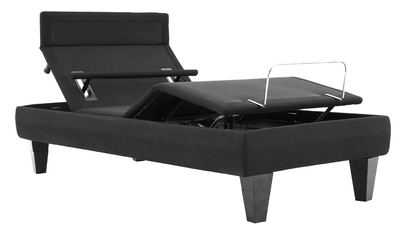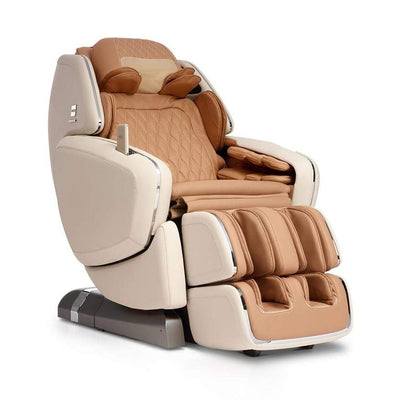What to Expect When Upgrading to a Tempur-Pedic Mattress?

Switching to a Tempur-Pedic mattress isn’t just an upgrade—it’s a whole new sleep experience. Unlike traditional beds, Tempur-Pedic adapts to your body, relieving pressure points and providing deep, personalized support. If you’re used to a bouncy or firm mattress, the unique feel of memory foam may take some getting used to, but the comfort it delivers can be life-changing.
Many people are upgrading to a Tempur-Pedic mattress for better sleep, less pain, and longer-lasting support. If you’re tired of waking up sore, feeling every toss and turn from your partner, or dealing with a mattress that wears out too soon, this could be the perfect switch. But before you take the leap, here’s what you should expect.
How Your Sleep Experience Will Change
1. A Different Feel Compared to Traditional Mattresses

Tempur-Pedic mattresses don’t feel like regular spring or foam beds. The memory foam responds to body heat and pressure, creating a slow-moving, contouring effect. If you’re used to a bouncy mattress, it may take time to get used to the lack of pushback.
At first, the mattress may feel firmer than expected, but it softens as the foam adapts to your body. This adjustment period can take anywhere from a few nights to a couple of weeks, depending on how much your previous mattress differed from a Tempur-Pedic.
2. Expect an Adjustment Period
Your body may need time to fully adjust to the support of a Tempur-Pedic. The mattress evenly distributes weight, which can help relieve pressure points, but it may feel strange at first. Some people experience temporary soreness before their muscles and joints adapt to the new level of support.
Give it at least two weeks before deciding if the mattress is right for you. If you’ve been sleeping on a very soft or very firm bed, this transition may take a little longer.
3. Height and Weight Differences
Tempur-Pedic mattresses are heavier and thicker than traditional mattresses. The dense foam layers add weight, which makes them harder to move. If you’re upgrading, consider whether your current bed frame or base can support the extra weight.
Some models also sit higher than expected, especially if paired with an adjustable base. If you have a low-profile bed frame, you may need deep-pocket sheets or a lower foundation to keep the mattress at a comfortable height.
Sleep Benefits You’ll Notice
1. Pressure Relief and Support for Joint Pain
One of the biggest health benefits of a Tempur-Pedic mattress is how well it relieves pressure points. The foam molds to your body, reducing stress on areas like the shoulders, hips, and lower back. Many people notice an improvement in back pain and stiffness after switching to a Tempur-Pedic because the mattress promotes better spinal alignment. It also minimizes tossing and turning since the foam helps maintain a comfortable sleep position.
2. Motion Isolation for Better Sleep
If you share a bed, this is one of the best perks. The foam absorbs movement, so if your partner tosses and turns or gets up at night, you won’t feel it as much. Traditional innerspring beds transfer motion across the surface, but Tempur-Pedic mattresses isolate movement, making them ideal for couples or light sleepers.
3. Temperature Regulation and Cooling Features

Some people find that memory foam traps heat, but Tempur-Pedic offers cooling options to prevent overheating.
-
TEMPUR-Breeze models include cooling layers that absorb excess heat.
-
Hybrid models combine memory foam with coils to improve airflow.
-
Breathable covers wick away moisture for a cooler sleep surface.
If you tend to sleep hot, choosing a Tempur-Pedic with built-in cooling technology can make a big difference.
Long-Term Durability and Maintenance
1. Longer Lifespan Than Traditional Mattresses
Tempur-Pedic mattresses are built to last. While standard memory foam beds typically wear out after 6-8 years, a Tempur-Pedic can last 8-10 years or more with proper care. A common misconception of a Tempur-Pedic mattress is that it wears out quickly, but its high-density construction ensures long-term durability and comfort.
2. Low-Maintenance Design
Unlike traditional beds, Tempur-Pedic mattresses don’t need to be flipped or rotated. The foam layers are designed to keep their structure without needing adjustments.
To extend the life of your mattress:
-
Use a mattress protector to prevent stains and spills.
-
Keep it on a solid foundation or adjustable base for proper support.
-
Spot clean when needed, and check if your model has a removable, washable cover.
Upgrade Your Sleep with a Tempur-Pedic Mattress
Experience unmatched comfort, pressure relief, and motion isolation for deeper, more restful sleep. Say goodbye to restless nights and hello to lasting support and relaxation. Shop now and transform your sleep at MattressLux!
Final Thoughts
Upgrading to a Tempur-Pedic mattress brings noticeable changes. The unique memory foam feel, pressure relief, and motion isolation can improve sleep quality, but the adjustment period may take time. If you’re looking for long-lasting comfort, better spinal support, and minimal motion transfer, a Tempur-Pedic mattress could be the perfect upgrade.
FAQs
How long does it take to adjust to a Tempur-Pedic mattress?
Most people adjust within a couple of weeks, but it depends on what type of mattress you had before. Give it time to fully break in.
Do Tempur-Pedic mattresses sleep hot?
Standard memory foam can retain heat, but Breeze® and hybrid models have cooling layers to help regulate temperature.
Are Tempur-Pedic mattresses good for back pain?
Yes, the foam contours to the body and provides support, making it a great option for back pain relief.
Can I use my current bed frame with a Tempur-Pedic mattress?
As long as your frame provides solid support, it should work. Adjustable bases are also a good option.
Is a Tempur-Pedic mattress worth the price?
If you need pressure relief, durability, and motion isolation, a Tempur-Pedic is a great investment in better sleep.




